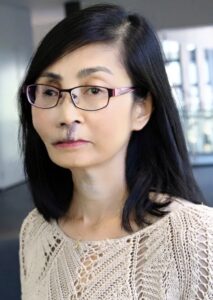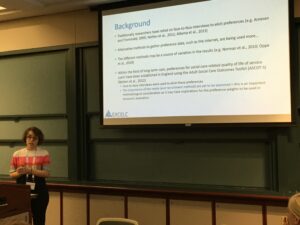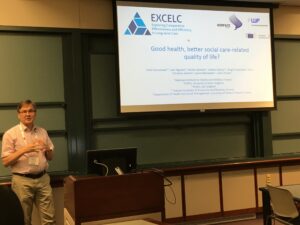 by Lien Nguyen Researcher at the Centre for Health and Social Economics, National Insitute for Health and Welfare (THL)
by Lien Nguyen Researcher at the Centre for Health and Social Economics, National Insitute for Health and Welfare (THL)
Two EXCELC team members presented their works at the iHEA World Congress in Health Economics held in Boston on July 8–11, 2017. Eirini Saloniki presented early findings on differences in preferences elicited from internet and face-to-face surveys, based on data from a best-worst scaling experiment using the English Adult Social Care Outcomes Toolkit service user measure (ASCOT-S). Ismo Linnosmaa gave a talk on our  preliminary work exploring whether general good health leads to better social care related quality of life. Both presentations were well received. We are using the feedback from the useful discussions to refine our work.
preliminary work exploring whether general good health leads to better social care related quality of life. Both presentations were well received. We are using the feedback from the useful discussions to refine our work.
In addition to the iHEA Congress, the Finnish team submitted two written papers to the Nordic Health Economists’ Study Group Meeting (NHESG) held in Helsinki on August 23–25, 2017. Ismo Linnosmaa submitted the paper on the relationship between general good health and social care related quality of life and Lien Nguyen submitted a paper presenting Finnish population preferences for the ASCOT service user measure. The discussants for these written papers (Professor Jan Aben Olsen, University of Tromsø, and Associate Professor Line Bjørnskov Pedersen, University of Southern Denmark) provided detailed and useful feedback, which has helped to further refine our analysis. Many colleagues showed an interest in our work and are looking forward to us returning to a future study group meeting with our final results.

The iHEA (International Health Economic Association) World Congress in Health Economics is a biennial conference traditionally held in July. The NHESG (Nordic Health Economists’ Study Group) Meeting is an annual conference traditionally held in August, involving researchers mostly from Denmark, Finland, Iceland, Norway and Sweden. The number of researchers, including doctoral students that attend the Nordic conference each year is about 70–100. Written papers must be submitted to the conference organisers beforehand and 40 minutes are allotted to each paper for discussion, led by a discussant. The discussant will first summarise the paper and then give his/her comments on the paper, after which the paper’s authors can reply and the audience can join the discussion.
